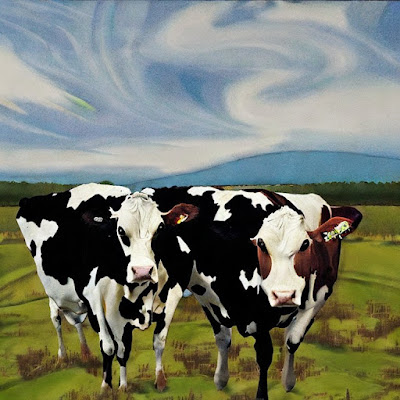The four stomach compartments in a cow are:
Rumen: The rumen is the largest compartment and serves as a fermentation vat. It contains billions of microorganisms, including bacteria, protozoa, and fungi, that break down cellulose and other complex carbohydrates present in plants into simpler substances like fatty acids and volatile fatty acids.
Reticulum: The reticulum is responsible for the regurgitation of partially digested food, known as cud. Cows and other ruminants bring back the cud into their mouths to rechew and further break down the plant matter for better digestion.
Omasum: The omasum is sometimes called the "manyplies" due to its many folds. Its primary function is to absorb water and certain nutrients from the partially digested food.
Abomasum: The abomasum is comparable to the true stomach found in monogastric animals (animals with a single-chambered stomach). It is where gastric juices, including hydrochloric acid and digestive enzymes, break down the food further and prepare it for nutrient absorption.
The reason behind having four stomach compartments is to enable a thorough breakdown of the complex carbohydrates and cellulose found in plant cell walls. These substances are challenging to digest, but with the help of the rumen's microbial population, ruminants can access the nutrients locked within plant materials. The process of fermentation and regurgitation of cud allows them to extract more energy and nutrients from their diet than animals with a simple, single-chambered stomach would be able to do.


1 comment:
I have learned something new today. Thank you.
Post a Comment